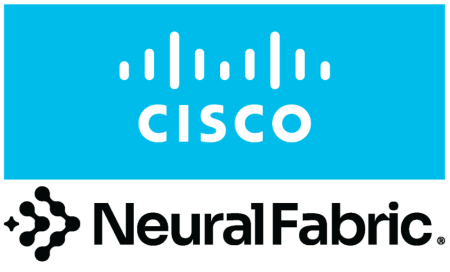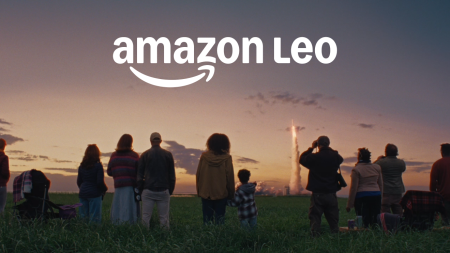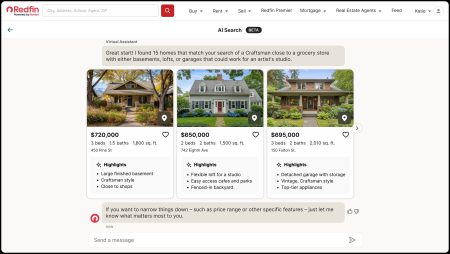Microsoft’s AI Cathedral: Experience Center One Offers a Glimpse into the Future
In the lush, evergreen-lined outskirts of Microsoft’s Redmond headquarters, a striking four-story glass building has emerged as a testament to the company’s vision of an AI-powered future. Experience Center One, positioned strategically overlooking Lake Bill, serves as Microsoft’s new showcase for business and technology decision-makers. This invitation-only facility combines elements of a high-tech briefing center, conference space, and immersive technology showroom where visitors witness AI systems managing factory operations, modeling financial markets, and accelerating drug discovery. The message is unmistakable: Microsoft isn’t merely betting on AI as a passing trend but positioning it as a fundamental business transformation. While tech giants collectively pour billions into data centers, GPUs, and frontier models, Microsoft’s approach distinguishes itself through its emphasis on custom “agentic systems” – AI that acts autonomously on behalf of workers to accomplish tasks across varied tools and data sources.
The architectural marvel itself speaks to Microsoft’s ambitions. With its elevated garden nestled within a soaring open-air atrium, Experience Center One sits just opposite the company’s new executive offices on its revamped East Campus. Inside, Microsoft highlights what it calls “frontier firms” – forward-thinking companies leveraging AI to redefine what’s possible in their industries. According to Alysa Taylor, Microsoft’s chief marketing officer for Commercial Cloud and AI, agentic AI represents “the next defining chapter of a frontier organization.” The underlying message carries both promise and warning: embrace AI transformation or risk falling behind. This narrative is supported by a Microsoft-commissioned IDC study showing companies integrating AI across multiple business functions achieving nearly triple their investment (2.84× ROI) while “laggards” see negative returns (0.84× ROI). Even more striking is the revenue divide – 88% of frontier firms report top-line growth from their AI initiatives compared to just 23% of companies trailing behind. The investment case seems clear, especially considering someone must finance those multi-billion-dollar AI superfactories.
What sets Experience Center One apart from typical tech showcases is its focus on deeply customized solutions developed with major enterprise partners rather than generic off-the-shelf products. One demonstration features Microsoft’s collaboration with BlackRock, integrating a custom AI copilot into the investment firm’s Aladdin platform. This system helps analysts process vast quantities of client and market data more efficiently, translating natural language requests into BlackRock’s proprietary programming language (BQL). Another showcase highlights “Ask Ralph,” developed with Ralph Lauren, which interprets shoppers’ intent and recommends complete outfits from available inventory. These examples reflect a broader trend confirmed in the IDC report – 58% of leading firms already rely on custom-built or fine-tuned AI solutions rather than generic models, with 70% planning to move further toward customization in the next two years to better handle proprietary data and compliance requirements. Taylor notes this parallels earlier trends in low-code development, where businesses increasingly customize out-of-the-box solutions to their specific needs.
Perhaps the most compelling demonstrations involve teams of AI agents collaborating to transform industrial operations. A Mercedes-Benz digital twin simulation showcases how virtual factory models allow engineers to diagnose production issues without disrupting actual operations. When efficiency drops, rather than spending days with specialists poring over machine logs and sensor data to identify something as minor as a slight angle change in a screw, a manager simply asks the system to diagnose the problem. This triggers multiple specialized AI agents – one pulling relevant data, another retrieving machine logs, and a third interpreting everything in plain language. Within approximately 15 minutes, the system produces a clear explanation and potential fixes for what would otherwise be nearly a week-long investigation. This dramatic compression of time-intensive processes extends beyond manufacturing into scientific research, as demonstrated by Insilico Medicine’s work with Microsoft. Their “digital researcher” scans vast amounts of biomedical data to identify promising disease targets in days rather than the months it would take human scientists. A complementary system runs simulated chemistry experiments, generating and ranking potential molecules that might bind to those targets within days instead of weeks or months of traditional lab work.
While the demonstrations are undoubtedly impressive, they represent carefully curated examples of AI’s potential rather than widespread current implementation. Experience Center One functions as a modern successor to Microsoft’s longtime Executive Briefing Center, hosting business delegations and political dignitaries (including Luxembourg’s prime minister) but remaining closed to the general public. The facility includes private briefing suites, a full cafe, and a conference center with three auditoriums. One of its most distinctive features is an interactive portal where visitors exit through an immersive digital corridor displaying scenes of nature. Motion sensors track movement, causing digital elements to respond to visitors’ presence, while audio of locally recorded nature sounds plays in the background. In a thoughtful Pacific Northwest touch, the visual display connects to weather APIs, matching the digital environment to real-world conditions outside – if it’s raining in Redmond, it’s raining in the digital tunnel too.
As visitors leave Experience Center One, this final interactive experience offers a moment of reflection – a programmed moment of tranquility to help executives center themselves while contemplating the technological frontier ahead. The facility itself represents Microsoft’s cathedral to an AI-powered future, where the company isn’t just selling technology but a vision of transformation through custom agentic systems. Whether this vision materializes as broadly or rapidly as Microsoft suggests remains to be seen, but the company has clearly made its case: AI isn’t merely about chatbots or generic models, but about purpose-built systems that can fundamentally reshape how businesses operate. In this vision, those who embrace comprehensive AI transformation stand to reap substantial returns, while those who hesitate risk being left behind as the technological divide widens. Experience Center One, with its blend of architectural beauty and cutting-edge demonstrations, serves as both showcase and subtle warning – the future is agentic, and Microsoft is positioning itself as the company to guide businesses through this next frontier.















